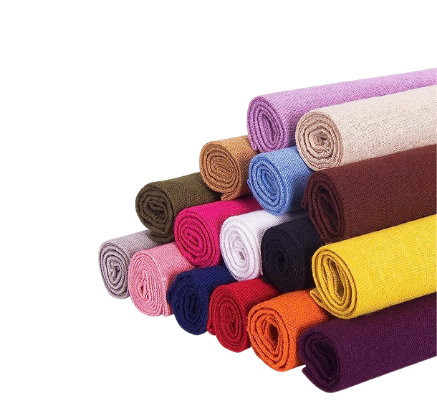Key Highlights
- Hospital bed sheets come in various sizes, including twin, full, queen, and king.
- It is crucial to measure your hospital bed before purchasing sheets to ensure they fit properly.
- Fitted sheets are the most common type of hospital bed linen, but flat sheets and pillowcases also come in different sizes.
- Cotton and cotton blends are commonly used for hospital bedding because they are breathable and soft against the skin.
- Material considerations for hospital bed sheets include cotton, polyester, and microfiber, each offering different benefits.
- Features to look for in hospital bed sheets include thread count, waterproof and stain-resistant options, and sheets with antibacterial properties.
Introduction
When it comes to what kind of sheets do you need for a hospital bed, finding the right size sheets can be a daunting task. Hospital beds come in different sizes, and so do the sheets that fit them. But don’t worry, we’ve got you covered. In this blog post, we’ll guide you through everything you need to know about sizing up hospital bed linen. From the standard sizes of hospital bed sheets to the common sizes of hospital beds, we have it all covered. Plus, we’ll answer questions such as whether twin fitted sheets will fit a hospital bed and what kind of sheets do you need for a hospital bed. So sit back and relax as we help you find the perfect sheets for your loved one’s hospital bed.
How to Choose Hospital Bed Sheets and Bedding
When it comes to choosing hospital bed sheets and bedding, there are a few factors to consider. First and foremost, it is important to measure your hospital bed before purchasing sheets to ensure they fit properly. Hospital beds come in various sizes, from twin to king, so it is crucial to select the right size sheets.
In addition to size, the material of the sheets is equally important. Cotton and cotton blends are commonly used for hospital bedding because they are breathable, soft against the skin, and easy to clean. Polyester blends are also a popular choice as they are durable and wrinkle-resistant, making them ideal for hospital use.
Another factor to consider is the thread count of the sheets. Thread count refers to the number of threads woven into one square inch of fabric. Higher thread counts generally mean softer and more comfortable sheets, but they can also be more expensive. It is important to find a balance between comfort and cost when selecting the thread count for hospital bed sheets.
Lastly, fitted sheets are the most common type of hospital bed linen. They have elastic corners that help them stay in place on the mattress, ensuring a snug fit. Flat sheets and pillowcases also come in different sizes to accommodate various hospital bed dimensions.
By considering the size, material, thread count, and type of sheets, you can choose the perfect hospital bed linen for maximum comfort and durability.
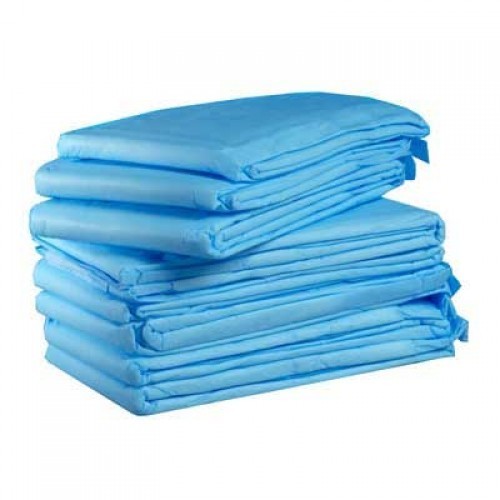
Types of Sheets Suitable for Hospital Beds
When it comes to hospital beds, there are three main types of sheets to consider: fitted sheets, flat sheets, and draw sheets. Fitted sheets are the most common type of hospital bed linen, as they provide a snug fit on the mattress. Flat sheets offer versatility in hospital settings and can be used as a top sheet or a covering. Draw sheets are essential for patient mobility and can be placed on top of the fitted sheet for added protection.
Fitted Sheets: Ensuring a Snug Fit
Fitted sheets are the most common type of hospital bed linen and are designed to fit snugly on the mattress. They have elastic corners that help them stay in place, ensuring a secure and comfortable fit.
When choosing a fitted sheet for a hospital bed, it is important to consider the size of the bed. Hospital beds come in various sizes, including twin, twin XL, full, queen, and king. It is crucial to measure the dimensions of your hospital bed before purchasing a fitted sheet to ensure it fits properly.
The size of the fitted sheet should match the size of the hospital bed mattress. If the fitted sheet is too small, it will not stay in place and may become loose or wrinkled, causing discomfort for the patient. On the other hand, if the fitted sheet is too large, it may slip off the mattress or bunch up, also causing discomfort.
To ensure a snug fit, look for fitted sheets specifically designed for hospital beds. These sheets are tailored to fit the unique dimensions of hospital bed mattresses, providing a secure and comfortable sleeping surface for patients.
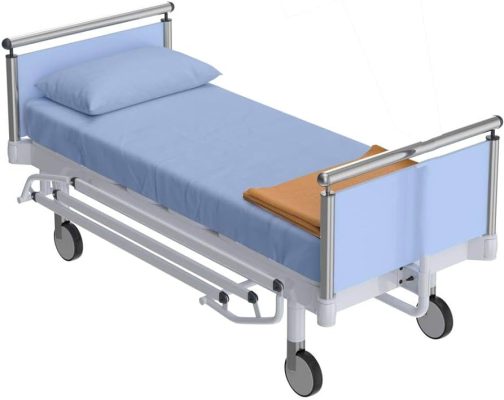
Flat Sheets: Versatility in Hospital Settings
Flat sheets offer versatility in hospital settings and can be used in a variety of ways. They are typically rectangular in shape and come in standard sizes to fit different hospital beds. Here are a few ways flat sheets can be used in a hospital:
- As a top sheet: Flat sheets can be used as a top sheet to cover the patient and provide an additional layer of warmth and comfort.
- As a covering: Flat sheets can be used to cover the patient and the hospital bed to protect the bedding and maintain cleanliness.
- As a barrier: Flat sheets can be placed on top of the fitted sheet to create a barrier between the patient and the fitted sheet, providing an extra layer of protection and preventing direct contact with the fitted sheet.
- As a makeshift curtain: Flat sheets can be hung around the hospital bed to create privacy for the patient.
Flat sheets are versatile and can be easily folded and stored when not in use. They are an essential part of hospital bedding and provide added comfort and functionality in hospital settings.
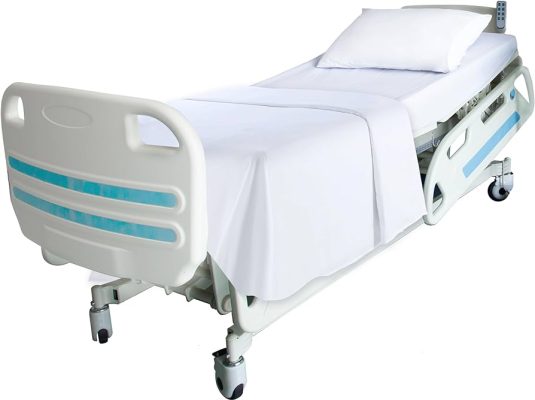
Draw Sheets: Essential for Patient Mobility
Draw sheets are an essential part of hospital bed linen, especially for patients who require mobility assistance. A draw sheet is a small sheet placed across the middle of the bottom sheet on a mattress. It covers the area between the patient’s upper back and thighs and can be made of cotton, plastic, or rubber.
Draw sheets serve several purposes in hospital settings, including:
- Assisting with patient mobility: Draw sheets make it easier for caregivers to turn and reposition patients, reducing the physical strain on both the patient and the caregiver.
- Protecting the bottom sheet: Draw sheets provide an extra layer of protection for the bottom sheet, reducing the need for frequent sheet changes and ensuring cleanliness.
- Promoting patient comfort: Draw sheets can enhance patient comfort by preventing direct contact with the bottom sheet and reducing friction.
When choosing a draw sheet, consider the material, size, and durability. It should be easy to clean, soft against the skin, and able to withstand frequent use and laundering.
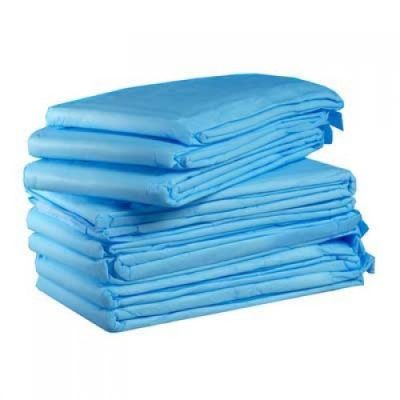
Material Considerations for Hospital Bed Sheets
The material of hospital bed sheets is an important consideration for patient comfort and hygiene. Common materials used for hospital bedding include cotton, polyester, and microfiber. Each material offers different benefits and considerations.
Cotton sheets are breathable, soft against the skin, and durable. They are a popular choice for hospital bed sheets due to their comfort and easy care.
Polyester sheets are durable, wrinkle-resistant, and easy to clean. They are a practical choice for hospital use, as they can withstand frequent washing and maintain their shape and color.
Microfiber sheets are soft, moisture-wicking, and hypoallergenic. They are a great option for patients with sensitive skin or allergies.
Consider the specific needs and preferences of the patient when selecting the material for hospital bed sheets.
Cotton vs. Polyester: Comparing Breathability and Durability
Cotton and polyester are two popular materials used for hospital bed sheets, each with its own benefits and considerations.
Cotton sheets are known for their breathability, softness, and comfort. They allow air to flow freely, helping to regulate body temperature and prevent overheating. Cotton sheets are also absorbent, wicking away moisture from the body, and are hypoallergenic, making them a great choice for patients with sensitive skin or allergies. Additionally, cotton sheets are durable and can withstand frequent washing without losing their shape or color.
Polyester sheets are known for their durability and wrinkle-resistance. They are easy to clean and maintain, making them a practical choice for hospital use. Polyester sheets are less breathable than cotton sheets, but they can be made with moisture-wicking properties, which can help keep the patient dry and comfortable. However, some patients may find polyester sheets to be less comfortable against the skin compared to cotton sheets.
When choosing between cotton and polyester sheets for a hospital bed, consider factors such as breathability, softness, durability, and the specific needs of the patient.
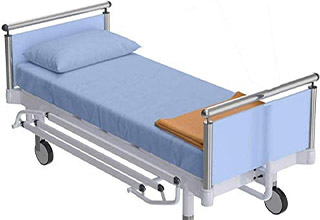
Hospital Bed Sheets (Light Blue)
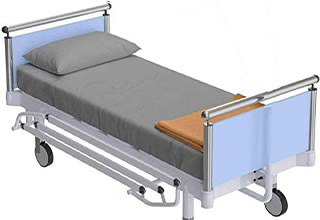
Hospital Bed Sheets Fitted Sets
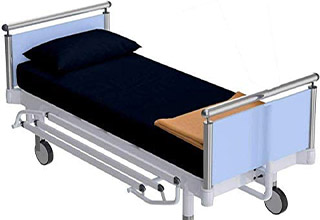
Micro Polyester Medical Bed Sheet
The Role of Microfiber in Infection Control
Microfiber sheets offer several benefits in terms of infection control in hospital settings. Microfiber is a synthetic material made from very fine fibers, usually a combination of polyester and polyamide.
Microfiber sheets are highly absorbent and have excellent moisture-wicking properties, which helps to keep the patient dry and comfortable. They are also hypoallergenic and resistant to bacteria, making them ideal for infection control in hospitals.
Microfiber sheets are easy to clean and quick-drying, which reduces the risk of bacterial growth and the spread of infections. They can withstand frequent washing without losing their softness or durability. Additionally, microfiber sheets are resistant to stains, making them easy to maintain and ensuring a clean and hygienic sleeping surface for patients.
When considering the role of microfiber in infection control, it is important to choose high-quality microfiber sheets that have been tested and certified for their antimicrobial properties. These sheets can significantly contribute to maintaining a clean and safe healthcare environment during a patient’s hospital stay.
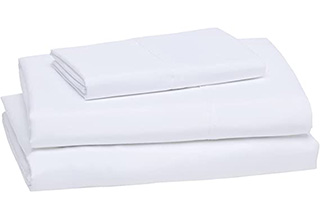
Exploring Hypoallergenic Materials for Sensitive Skin
For patients with sensitive skin or allergies, hypoallergenic materials are essential for hospital bed sheets. Hypoallergenic materials are designed to minimize or eliminate potential allergenic substances, reducing the risk of skin irritation and allergic reactions.
Organic cotton is a popular choice for hypoallergenic hospital bed sheets. Organic cotton is grown without the use of synthetic pesticides or fertilizers, reducing the risk of chemical irritants. It is also softer and more breathable than conventional cotton, providing a comfortable and gentle sleeping surface for patients with sensitive skin.
Other hypoallergenic materials for hospital bed sheets include bamboo and microfiber. Bamboo sheets are naturally hypoallergenic, antimicrobial, and moisture-wicking, making them an excellent choice for patients with allergies or sensitive skin. Microfiber sheets are also hypoallergenic and resistant to bacteria, making them suitable for patients with allergies or asthma.
When selecting hypoallergenic materials for hospital bed sheets, consider the specific needs and sensitivities of the patient to ensure a comfortable and irritation-free sleeping environment.
Features to Look For in Hospital Bed Sheets
When choosing hospital bed sheets, there are several features to consider. These include thread count, waterproof and stain-resistant options, and sheets with antibacterial properties. These features can contribute to patient comfort, durability, and hygiene.
Importance of Thread Count and Weave
Thread count and weave are important factors to consider when choosing hospital bed sheets. Thread count refers to the number of threads woven into one square inch of fabric. A higher thread count generally indicates a softer and more durable sheet.
Percale weave is a popular choice for hospital bed sheets. Percale is a plain-weave fabric with a thread count of at least 180. It is lightweight, crisp, and breathable, providing a cool and comfortable sleeping experience for patients.
When choosing hospital bed sheets, consider a thread count of at least 180 for a softer and more comfortable sheet. Percale weave is an excellent choice for hospitals due to its durability and breathability.
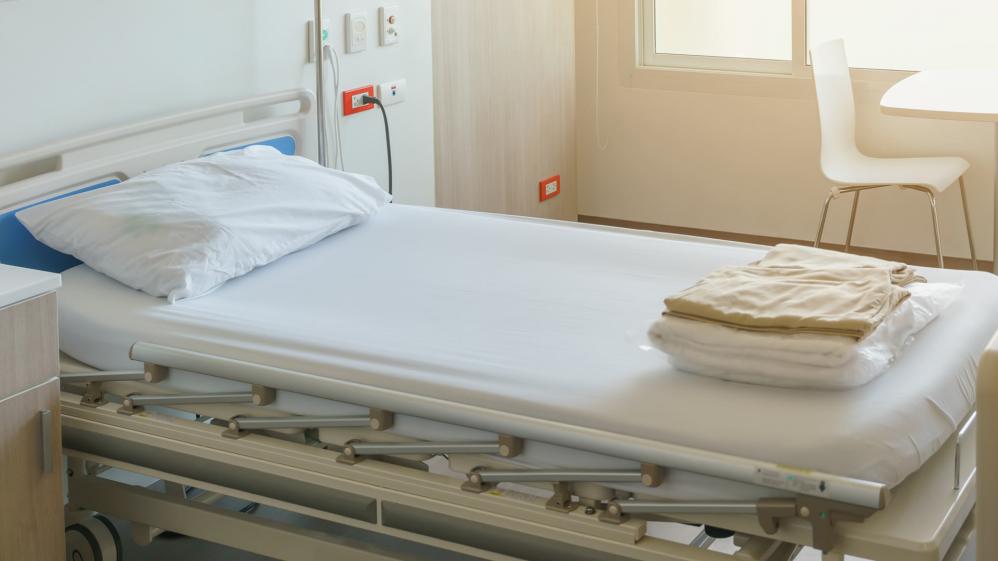
Waterproof and Stain-Resistant Options
Waterproof and stain-resistant options are essential for hospital bed sheets to maintain cleanliness and hygiene. Waterproof sheets are made from a special fabric that prevents liquids from seeping through, protecting the mattress and ensuring a clean sleeping surface for patients.
Stain-resistant sheets are treated to repel liquids and prevent stains from setting in. This feature is particularly beneficial in a hospital setting, where spills and accidents are common.
Both waterproof and stain-resistant sheets are easy to clean and maintain. They can be wiped clean with a damp cloth or machine washed, saving time and effort for caregivers.
When selecting hospital bed sheets, consider the waterproof and stain-resistant options to promote cleanliness and ease of care.
Choosing Sheets with Antibacterial Properties
Choosing hospital bed sheets with antibacterial properties is crucial for maintaining a clean and hygienic environment for patients. Antibacterial sheets are treated with a special finish that inhibits the growth of bacteria, reducing the risk of infections and promoting better patient care.
Antibacterial sheets are particularly important in hospitals, where the risk of cross-contamination is high. They can help prevent the spread of bacteria and other pathogens, ensuring a safe and healthy environment for both patients and caregivers.
When selecting hospital bed sheets, look for those with antibacterial properties to enhance infection control and patient care.
How to Properly Care for Hospital Bed Sheets
Proper care and maintenance of hospital bed sheets are essential to ensure their longevity and cleanliness. This includes following washing and disinfection protocols, using care tips to extend the life of the sheets, and practicing storage and handling best practices.
Washing and Disinfection Protocols
Hospital bed sheets should be machine washable to facilitate frequent washing and maintain cleanliness. It is recommended to wash hospital bed sheets in hot water and use a detergent that is effective against bacteria and viruses.
Frequent washing is necessary to remove any potential contaminants and maintain hygiene. Hospital bed sheets should be washed regularly, especially if there are any spills or soiling.
Follow the manufacturer’s instructions for washing and drying hospital bed sheets. Some sheets may require special care or temperature settings.
Proper disinfection protocols should also be followed to ensure the removal of any bacteria or viruses. This may include using bleach or a disinfectant solution in addition to regular washing.
By following proper washing and disinfection protocols, you can ensure the cleanliness and hygiene of hospital bed sheets.
Washing and Disinfection Protocols
Hospital bed sheets should be machine washable to facilitate frequent washing and maintain cleanliness. It is recommended to wash hospital bed sheets in hot water and use a detergent that is effective against bacteria and viruses.
Frequent washing is necessary to remove any potential contaminants and maintain hygiene. Hospital bed sheets should be washed regularly, especially if there are any spills or soiling.
Follow the manufacturer’s instructions for washing and drying hospital bed sheets. Some sheets may require special care or temperature settings.
Proper disinfection protocols should also be followed to ensure the removal of any bacteria or viruses. This may include using bleach or a disinfectant solution in addition to regular washing.
By following proper washing and disinfection protocols, you can ensure the cleanliness and hygiene of hospital bed sheets.
Tips for Extending the Life of Bed Sheets
To extend the life of hospital bed sheets, consider the following care tips:
- Wash sheets in a gentle cycle with mild detergent to prevent wear and tear.
- Avoid using harsh chemicals or bleach, as they can damage the fabric and reduce the lifespan of the sheets.
- Dry sheets on low heat or hang them to air dry to prevent shrinkage or damage to the fabric.
- Rotate sheets regularly to distribute wear evenly and prevent excessive wear on specific areas.
- Store sheets in a cool, dry place to prevent mold or mildew growth.
- Avoid using fabric softeners, as they can decrease the absorbency of the sheets.
By following these care tips, you can extend the life of your hospital bed sheets and ensure their continued comfort and durability.
Storage and Handling Best Practices
Proper storage and handling of hospital bed sheets are important to maintain their cleanliness and prevent damage. Here are some best practices to follow:
- Store sheets in a clean and dry environment to prevent moisture, mold, and mildew growth.
- Avoid storing sheets in direct sunlight, as it can cause fading and deterioration of the fabric.
- Use proper folding techniques to minimize wrinkles and creases.
- Store sheets in a dedicated storage area or cabinet to prevent contamination from other items.
- Handle sheets with clean hands to avoid transferring dirt and oils onto the fabric.
Text Table:
Column Name A | Column Name B |
Proper storage | Store sheets in a clean and dry environment |
Handling techniques | Handle sheets with clean hands |
Folding techniques | Use proper folding techniques to minimize wrinkles |
Sunlight exposure | Avoid storing sheets in direct sunlight |
Storage area | Store sheets in a dedicated storage area or cabinet |
By following these storage and handling best practices, you can ensure the longevity and cleanliness of your hospital bed sheets.
Purchasing Guide: Where to Buy Hospital Bed Sheets
When it comes to purchasing hospital bed sheets, there are several options to consider. Recommended suppliers and brands offer a wide selection of hospital bed sheets, ensuring you can find the perfect fit for your needs.
Recommended Suppliers and Brands
When it comes to purchasing hospital bed sheets, there are several recommended suppliers and brands to consider. These suppliers and brands offer a wide variety of hospital bed sheets, ensuring you can find the perfect fit for your specific needs.
Some recommended suppliers and brands for hospital bed sheets include:
- Cxdqtex: Cxdqtex offers a variety of sizing options for hospital beds, ensuring you can find the perfect fit for your needs. They offer high-quality hospital bed sheets that are durable and easy to care for.
Evaluating Quality and Pricing
When evaluating the quality and pricing of hospital bed sheets, consider factors such as the material, thread count, and durability. High-quality hospital bed sheets will be made from durable and breathable materials, with a thread count that provides a comfortable sleeping experience.
While pricing is an important consideration, it is also essential to balance quality and cost. Investing in high-quality hospital bed sheets can ensure their longevity and provide maximum comfort for patients.
Online vs. Brick-and-Mortar Stores
When purchasing hospital bed sheets, you have the option to buy from online stores or brick-and-mortar stores. Each option has its advantages.
Online stores offer convenience and a wide variety of options. You can easily compare prices and read customer reviews to make an informed decision. Many online stores also offer free shipping, making it a cost-effective choice.
Brick-and-mortar stores allow you to see and feel the sheets before making a purchase. You can interact with store staff and ask any questions you may have. However, the selection may be limited compared to online stores.
Consider your personal preferences and needs when deciding between online and brick-and-mortar stores for purchasing hospital bed sheets.
Conclusion
In conclusion, selecting the right sheets for hospital beds is crucial for patient comfort and hygiene. Fitted sheets ensure a secure fit, while flat sheets offer versatility. Draw sheets aid in patient mobility. Consider materials like cotton for breathability and polyester for durability. Microfiber is excellent for infection control, and hypoallergenic options suit sensitive skin. Look for antibacterial properties and high thread count. Proper care through washing and disinfection protocols prolongs sheet life. Evaluate quality and pricing from recommended suppliers for a reliable purchase. To explore options further, get quotes from commercial suppliers.

